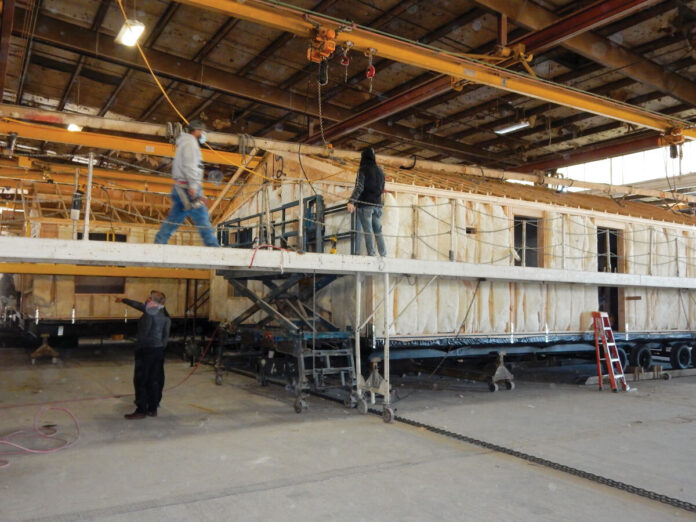Manufactured Housing Professional Design Flexibility to Fit Consumer Preferences
When the U.S. Department of Housing and Urban Development receives Congressional approval to change the definition of manufactured housing and unveils its changes to the HUD Code, it likely will exclude the requirement that a manufactured home is constructed on a permanent chassis.
The key phrases here are “requirement” and “permanent”.
For years industry leadership contemplated removal of the requirement, and consensus began to build during and after the 2017 Congress and Expo in Orlando. The Manufactured Housing Institute’s Technical Activities Committee spent time investigating how the matter might be approached. Now it seems the sentiment has been embraced by a large swath of elected officials and others on Capitol Hill.
The White House in a policy and budget release in mid March said it “plans to explore updating the statutory definition of manufactured housing — for example, through amending the chassis requirement”.
What does the elimination of a chassis requirement within the HUD Code mean to builders and homebuyers?
Flexibility in home design and configuration as well as increased access for manufactured homes in neighborhood settings.
“Despite their efficiency advantage, manufactured homes face discriminatory barriers to fair competition with site-built construction,” Andrew Justus and Alex Armlovich asserted in a February 2024 piece published by the Federation of American Scientists. “Many state laws and local zoning codes restrict or exclude manufactured homes, often based on architectural features common only on manufactured homes, like the Congressionally-mandated permanent chassis.”
Removing the chassis requirement doesn’t mean the home can’t be built with the heavy steel foundation of the home. It means that manufactured homes can be built with lighter weight materials to the same structural integrity, allowing builders to construct homes that can more easily sit on a poured concrete basement, or to have multi-story homes.
Bill Boor is the president of Cavco Industries, one of the nation’s largest off-site home builders, and also serves as chairman of the board for the Manufactured Housing Institute.
“The change to the chassis requirements doesn’t mean permanent chassis homes would go away. In many applications a permanent chassis is likely to make the most sense,” Boor said. “This change would be another important step in the evolution of manufactured housing and it would represent a significant additional opportunity for the design of a new set of federally approved factory-built homes.”
The reason consensus is building toward this measure and others intended to “unleash” the potential of manufactured housing is because the nation faces a massive shortage of new homes, particularly homes that most buyers can qualify to finance. The U.S. has a shortage of four million homes today, with nearly every market in the nation facing housing shortages and increased housing costs.
Addressing the chassis requirement is among the most important industry measures being considered, alongside securing HUD as the industry’s sole regulator, expansion of FHA Title I financing for manufactured homes, tackling local zoning issues, protecting manufactured home communities and the residents of those communities.
MHInsider is the leader in manufactured housing news and is a product of MHVillage, the top marketplace for mobile and manufactured homes.













